
[255] Phalacrocorax carbo, Cormorant
Introduction
About forty species of cormorants are recognized worldwide although their division into genera is uncertain. We only have two species in the UK, the first two species to be named and these are generally just called the Cormorant and the Shag. All the other species have the word cormorant or shag in their name. (The distinction between the two is vague but Shags tend to be smaller than Cormorants.)
Phalacrocorax carbo, the (Common) Cormorant or Great Cormorant, is fairly common and widespread inland on or near lakes. Its other geographical subspecies have other names in India, Australia and New Zealand.
Phalacrocorax aristotelis, the (European) Shag, is less common and is seen only on or very near the sea.
Taxonomy
Kingdom – Animals
Phylum – Chordates
Class – Aves (Birds)
Order – Suliformes
Family – Phalacrocoracidae
Genus – Phalacrocorax
Scientific Name – Phalacrocorax carbo, Phalacrocorax aristotelis
Name
The Latinised Greek phalacrocorax, from phalakros-korax, means bald crow and carbo is the Latin for charcoal.
Cormorant came to English via French from the Mediaeval Latin Corvus marinus, meaning sea-raven. The name Shag may come from the shaggy nature of its crest.
The Shag’s species epithet comes from the Greek philosopher Aristotle (384-322 BC.) As with many species named after a person, there is probably no particular reason for the association.
Description
Phalacrocorax carbo is more or less the largest species of Cormorant but it varies considerably in size. In winter it is almost black all over apart from a white bill and white cheeks with a yellow patch. Their eyes are a distinctive turquoise.

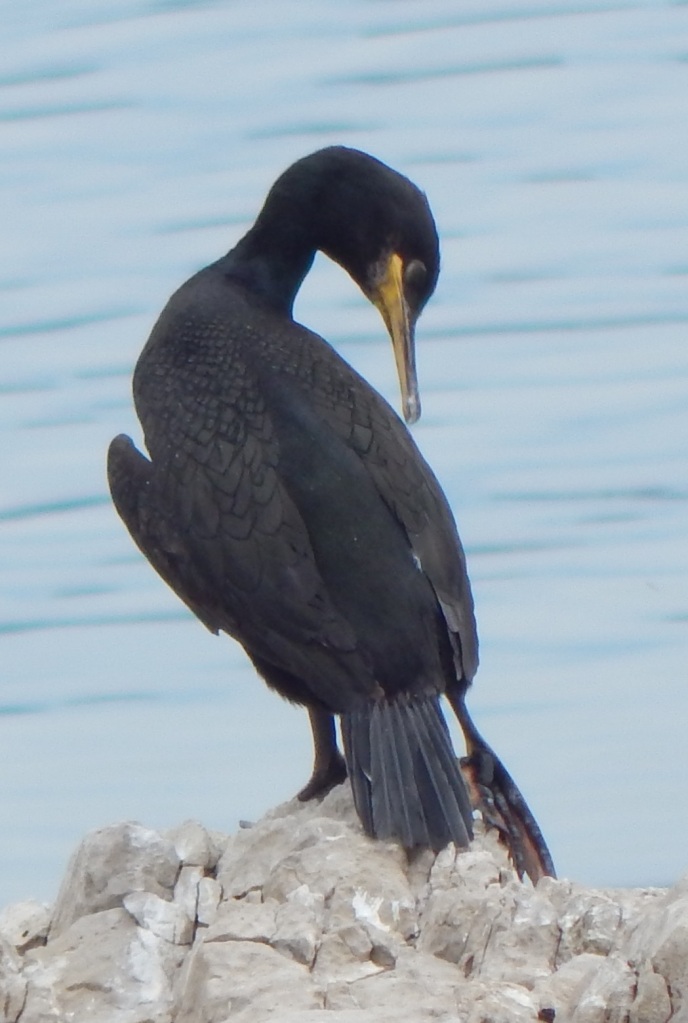
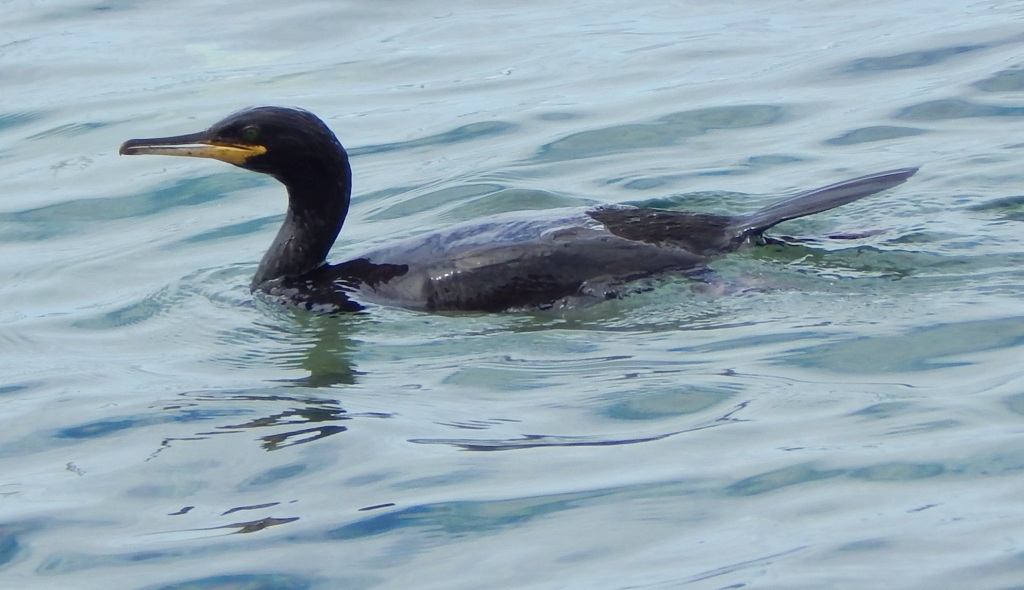

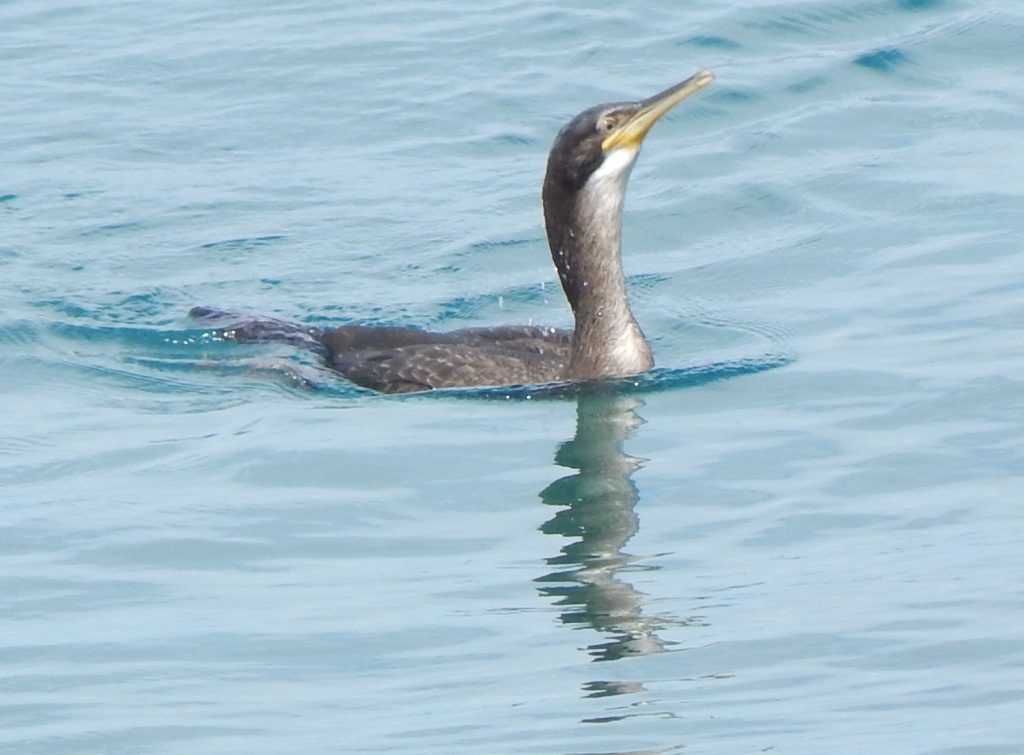
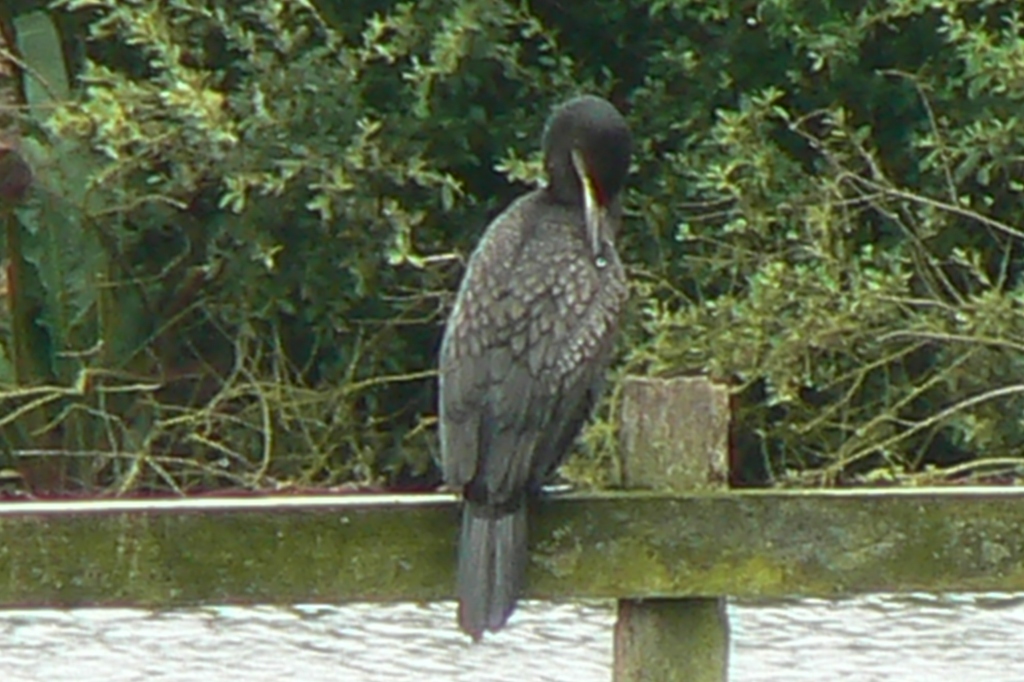
They are very distinctive in flight with the legs, body, neck and head making a horizontal straight line.
In breeding plumage much of the front of the bird is white.
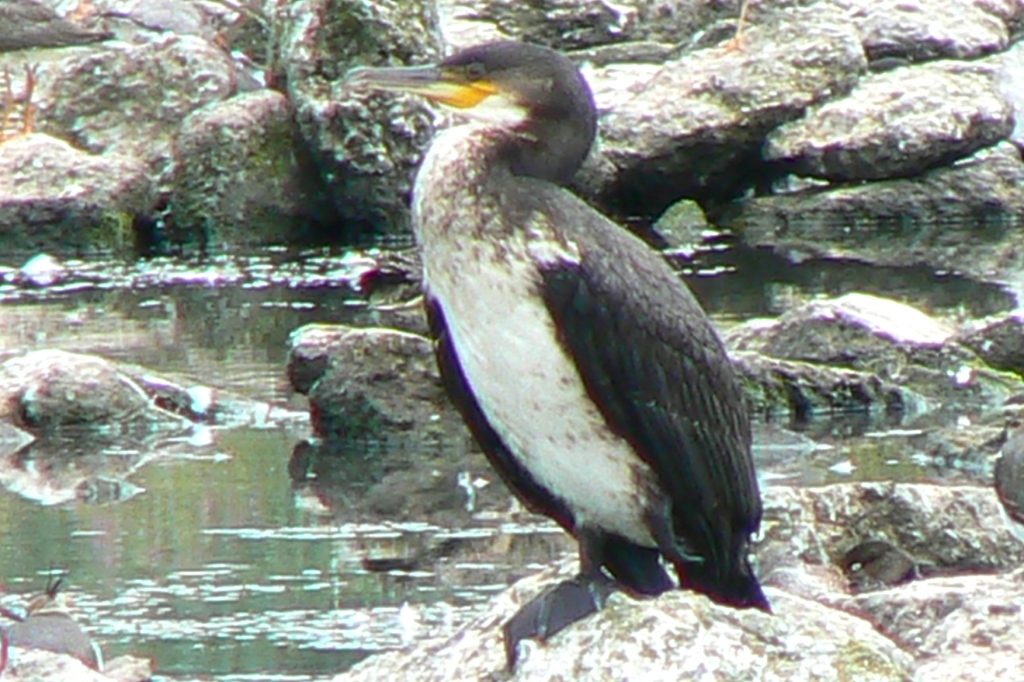
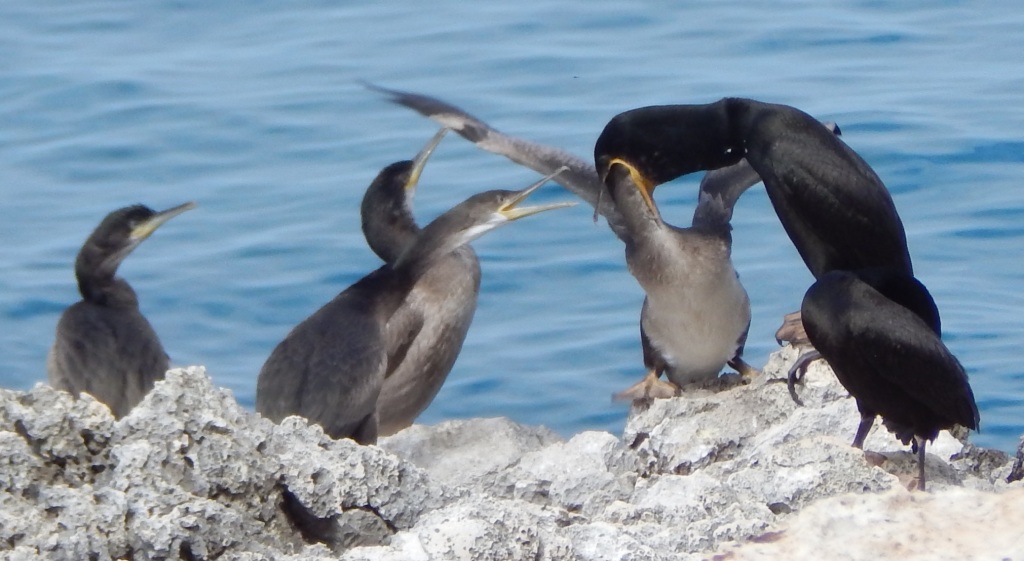

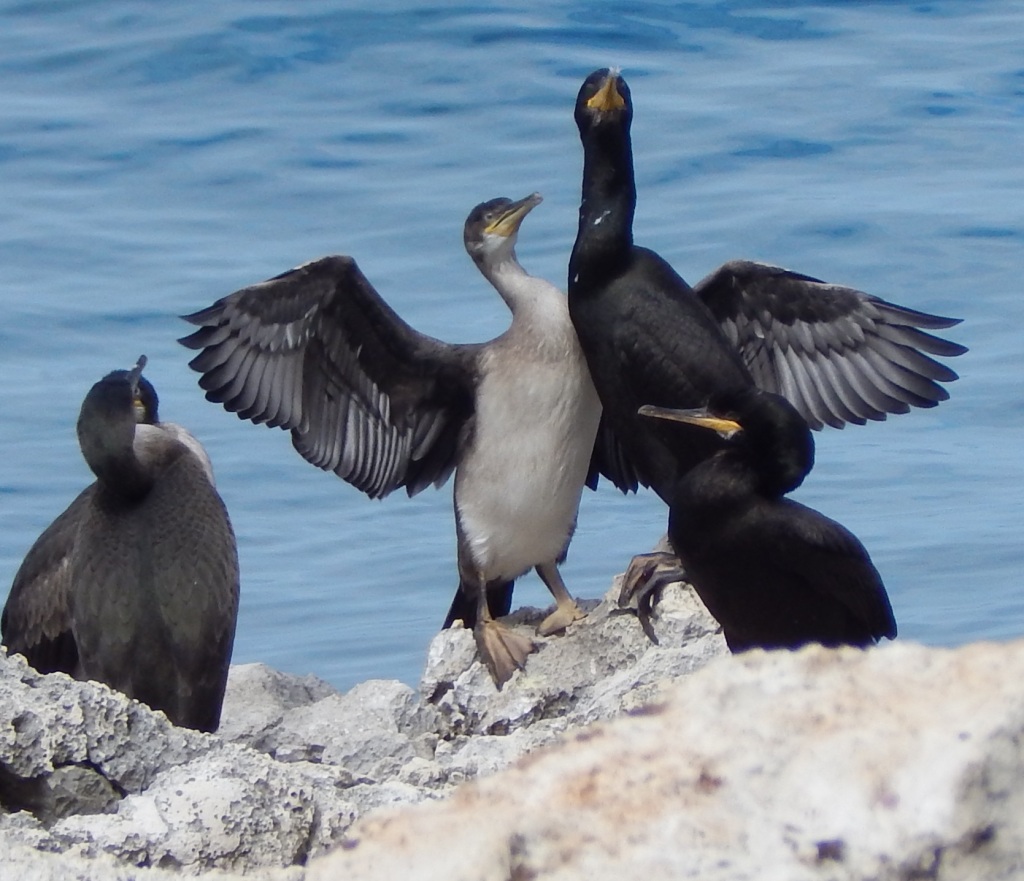
They feed on fish caught by swimming underwater.
They are often seen with their wings held outspread to dry them. Unlike most birds, cormorants do not have waterproof wings. (The usual waterproofing method traps air in the feathers and makes the bird too buoyant to dive deeply.)

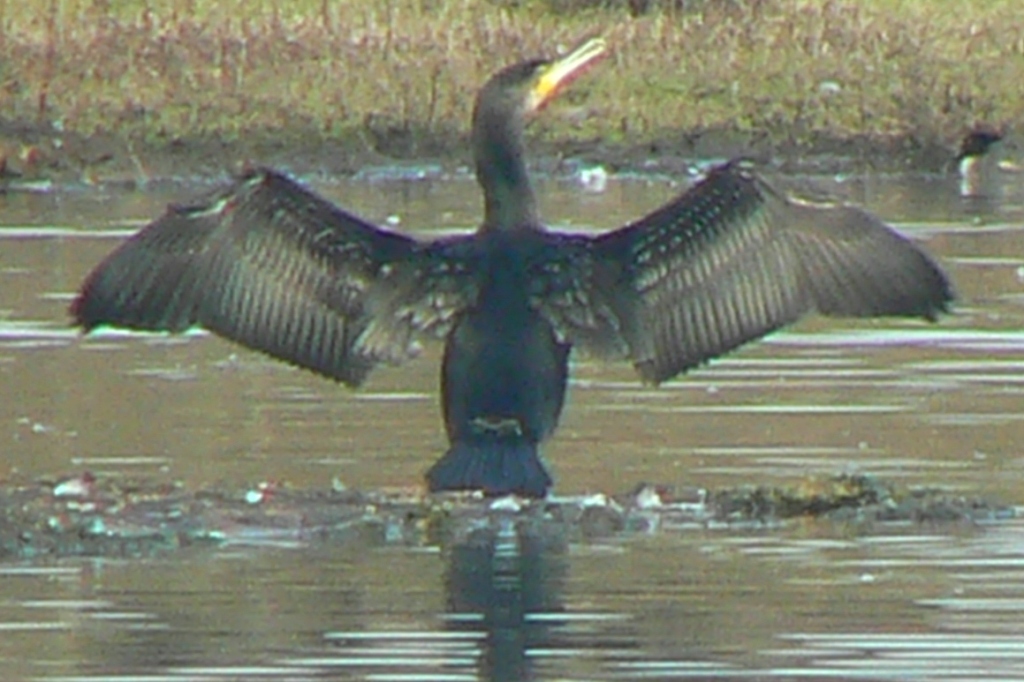
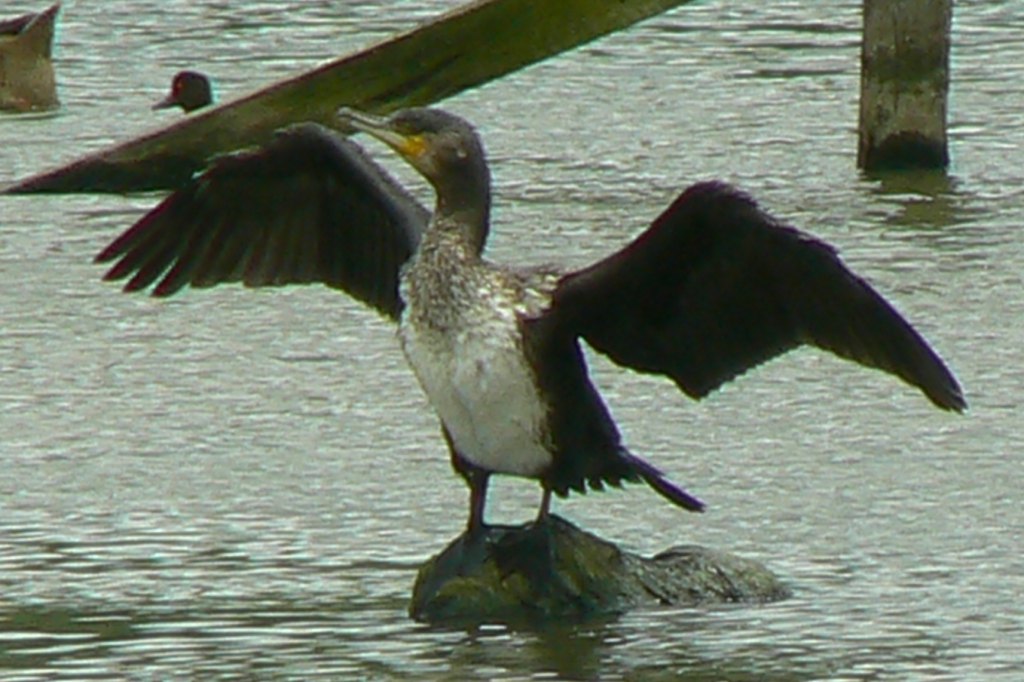
Habitat
The Cormorant is a rare breeding bird in Britain in the summer but is a common and widespread winter visitor. It likes wetland sites especially lakes including ornamental lakes in urban areas. You may see them in the sea. The only Cormorants I have ever seen that were not on water were either on protected islands in lakes or in trees (or other perches) above water.

Phalacrocorax carbo has scattered summer, winter and year-round resident areas including northwest Europe; India and the Far East; Eastern Africa; Australia and New Zealand; and the East coast of the USA. Studies suggest that it may be a paraphyletic collection of subspecies.
Other Notes
The Cormorant is even more difficult to photograph than [273] the Great Crested Grebe because of their diving habits. If you see one on a lake you may have about two seconds to find it in your camera, zoom, focus and take a picture. When it dives you have to wait for about thirty seconds until it reappears many metres away from where you are looking.
See also
Phalacrocorax aristotelis, the Shag, is not easy to distinguish from a Cormorant at a distance but you are unlikely to get close to one. They are smaller and slimmer with a more rounded head. Breeding adults may show a small crest and have a greenish tinge to their feathers.
They are found at sea around the coasts of the British Isles, Western Iceland, Norway and Finland, the Iberian Peninsular and the Mediterranean. They breed on rocky cliffs and unpopulated islands round the coast. You are less likely to see one breeding than [149] the Puffin or the other sea birds listed in that blog.
[230] Gannet is the only other British bird in the order Suliformes.
